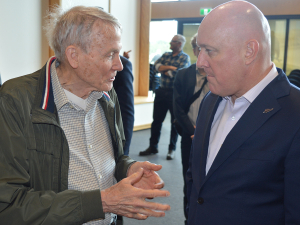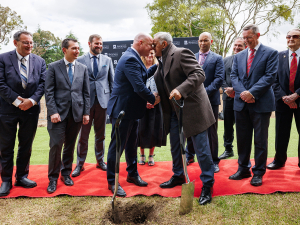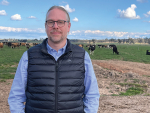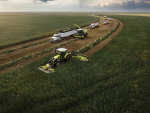Kahne Animal Health, founded in 2002 by a Gisborne drystock farmer, hopes data collected from trials on different farming systems will quantify benefits of its Sentinel electronic rumen monitor. Trials begin in June on five farms, each using 300-400 Sentinels.
The device is a sensor in a cigar-shaped cylinder inserted into the rumen of a cow. During milking it transmits to the farmer all data collected at five-minute intervals since the previous milking.
The company is also developing a fertility monitoring system called Catalyst.
Kahne general manager Susanne Clay says by the time milking ends, the Sentinel would have sent the farmer alerts on cows “functioning outside normal parameters”. “The farmer can draft the animal aside and start work on early treatment,” she says.
Clay says farmers want an indicator of potential health problems in cows. “With larger herds visible observations are becoming more difficult. We have a lot of things we’re currently measuring on farm: we measure the inputs and the outputs. This is the first time we’re actually measuring where that feed is converted to energy and being able to manage to that.”
Kahne in 2011 assigned engineers and telemetry specialists to develop the Sentinel and Catalyst for commercialisation. The recently awarded $1 million grant from Callaghan Innovation is pivotal to enabling the company to do its large-scale farm trials and develop applications, Clay says.
Researchers worldwide have so far bought 500 prototype units. Kahne will be at the National Fieldays where farmers can register interest and get on their mailing list. The company will take orders from New Zealand farmers for delivery in December.
Each Sentinel will cost about $100 and is expected to last three-four years.
Different farmers will see the value of the Sentinel differently, Clay says. “For some farmers the ability to get an indicator of potential health problems before they manifest themselves and impact animal health and productivity will drive incremental production; for others the focus will be more on improved nutrition management to optimise performance.
“If your animals are in better condition through the year, this should also provide you with better in-calf rates.
“You can also optimise your supplementary feed. Some farmers spend a lot of money on supplementary feed. If you’re able to optimise that… use that supplementary feed more efficiently, you can increase your production.
“Whether it’s lower input cost or higher productivity, being able to manage that fermentation component should drive value from a number of different areas.
“There is also the potential for decreased use of antibiotics because you are able to identify the animal earlier and minimise the non-production days, and the ability to reduce involuntary culls.
“Those are all key performance indicators that we will be assessing.”
















